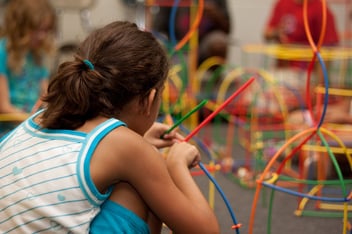Genuine inclusion key to integrating Indigenous perspectives
Ensuring inclusive, respectful and genuine engagement with the communities the water industry serves is crucial to integrating Indigenous world views into our water future, according to panel presenters at Ozwater’21.
Presented by AWA & Aurecon, the panel included insights from Balanggarra woman and Zion Engagement and Planning Director Elle Davidson, who said starting with Country is an important first step in two-way knowledge sharing within the water industry.
“We have recently developed some training for built environment professionals. It helps us as an organisation to establish a cultural framework around Country, community and culture,” she said.
“The process of starting with Country is about figuring out what your area of influence is and understanding what Country is speaking to you about. Country is always talking. It’s important to step back and be intentional about connecting with Country.
“We like to talk about cultural landscapes — not site-by-site assessments. All of this fits into the process of starting with Country. It’s about understanding the processes of where you’re working, but also how that connects to perspective.”
Davidson said the built environment industry also has a responsibility to do research before going out into communities and engaging.
“From the context of someone who works with community a lot, I know that there is consultation fatigue, but there is also a lot of frustration about people not doing their homework,” she said.
“There is a lot of information that can be found from many studies that have been done in all areas that we work in. It’s respectful to make sure you come prepared when you go to engage with community, then fill any gaps left after attaining the information that is already available.
“The process of understanding values of Country is also a very important step in the process. There are values of Country; how it was used and the context of how it’s found itself where it is today.”
In the context of working with community, Davidson said it’s also crucial to engage widely with the communities we are working with.
“It’s very easy, from a Western perspective, to talk to one person from one organisation to tick the engagement box,” she said.
“But that one person is never going to represent the whole community. It’s important to build a very strong and robust engagement matrix when engaging with Aboriginal communities, and to consider who else you should be talking to.
“Listening deeply is something I am learning more and more to practice every time I engage with a community. It’s very easy for us to go with an informed idea about what people are going to say and then structure questions that lead people to what we think they are going to say.
“For me, it's important to step back and allow people to give answers that I am not expecting. How did I allow space for them to share things beyond my set parameters of what I thought was going to come out of the engagement activity.”
Committing to reconciliation
Reflecting on the success of SA Water’s reconciliation action plan (RAP) journey, former SA Water Community and Engagement Manager Rachael Siddall said the utility has been working towards reconciliation since 2009.
“In terms of our reconciliation journey, we started off quite small. In 2009, we had a small group of Aboriginal staff who really took the lead on developing our first RAP,” she said.
Since then, SA Water has broadened and developed its water management profile within the APY lands, undertaken projects in collaboration with Indigenous communities, and taken a whole-of-business approach to engagement, reconciliation and inclusion.
“One of the real focuses for us moving forward is embedding reconciliation into how we do business as usual at SA Water. For us to be able to do that, we need to invest on three levels: with our people, our organisation and communities, and our partners,” Siddall said.
“With our people, we have a structured cultural awareness program. We also have a plumbing course and twinning program, where we provide skilled people to work with Aboriginal organisations that don’t necessarily have the capacity to do that work.
“We’ve also spent a lot of time embedding reconciliation into our corporate strategy and having it as one of our key pillars, but also making sure we have the appropriate reporting and governance systems, as well as leadership KPIs.
“In terms of community, we spent a lot of time working with the community in the development of our RAP. Our RAP is not just an inward facing plan. It has come to life through the communities views and voices.”
Siddall said that while SA Water can work on reconciliation within its business, it's also crucial help achieve this in the wider community. We’ve done this through our drinking fountains programs, as well as naming of sites and art on infrastructure.
"We want to ensure the people we partner with share our values. We expect a commitment to reconciliation from our partners," she said.
"We still have a long way to go. But we have commitment from the top and a really strong ambition to continuously improve."

